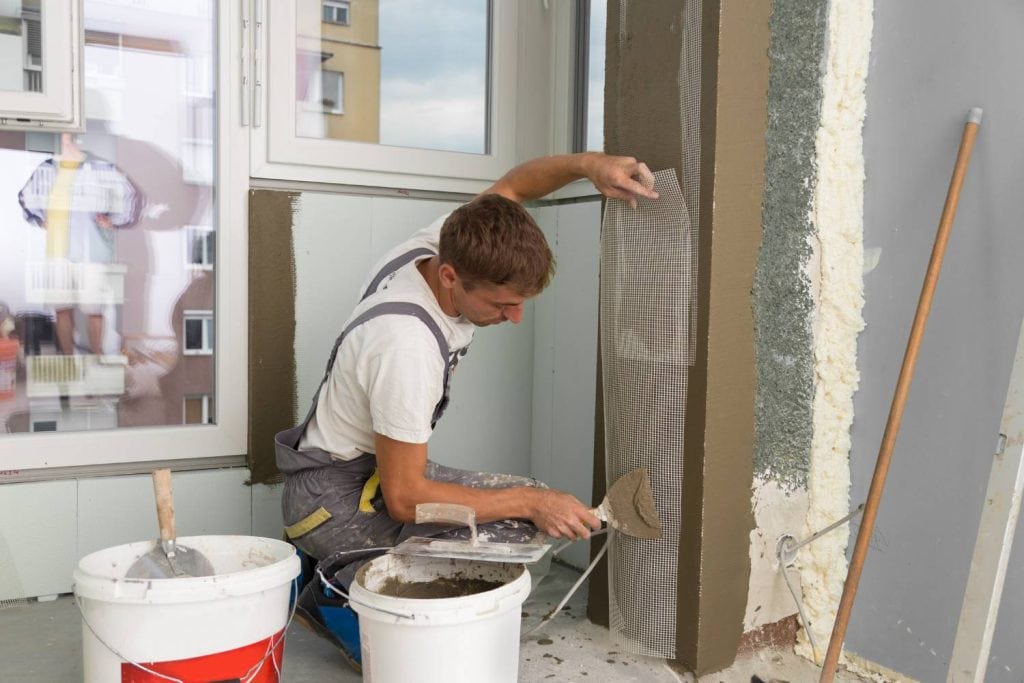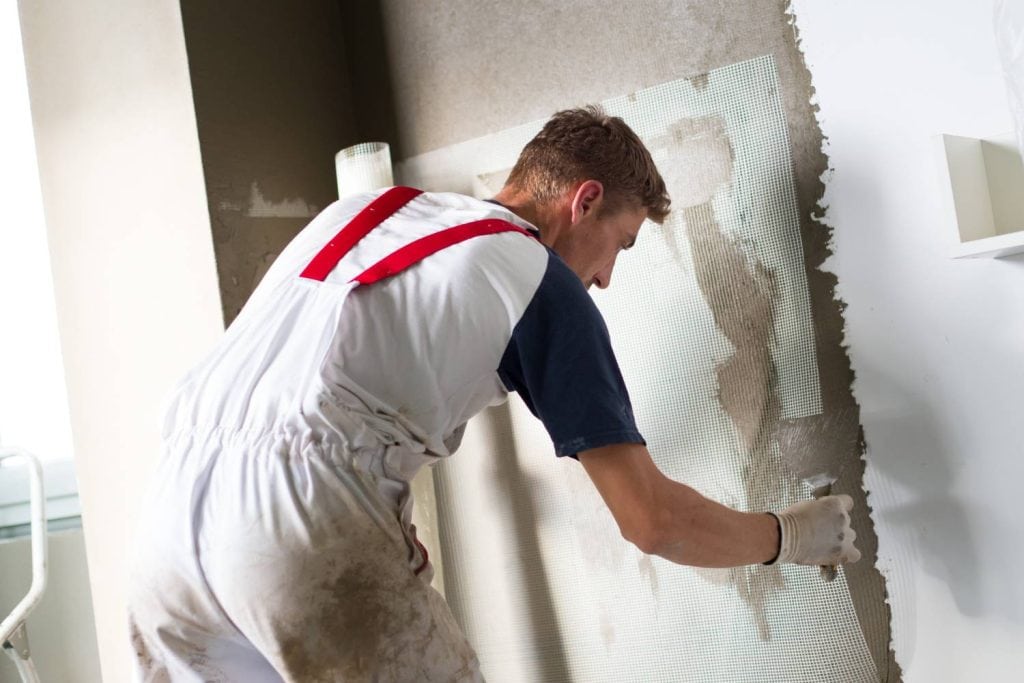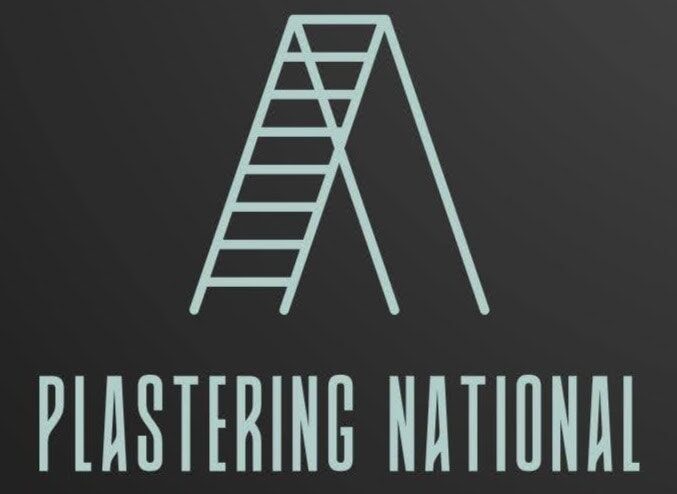Plaster is a time-tested and essential building material widely used in construction for its ability to create smooth, aesthetically pleasing finishes on walls and ceilings. However, despite its many benefits, plaster is prone to a variety of issues including cracks, water damage, and detachment. When plaster is damaged, timely repairs are crucial to maintain both its structural integrity and appearance. Choosing the right plaster repair material is essential for achieving long-lasting and visually appealing repairs.
In this guide, we will explore the key factors you need to consider when selecting plaster repair materials. We’ll cover common plaster problems, types of plaster for repairs, and best plaster repair materials for different situations. By the end, you will be equipped with the knowledge to confidently address any plaster repair needs you encounter.
Let’s Get Straight To The Point
Plaster is a durable material used for smooth finishes on walls and ceilings, but it can suffer from cracks, water damage, and detachment over time. Selecting the right plaster repair materials is crucial for effective and long-lasting repairs.
Common types of plaster include cement plaster, lime plaster, gypsum plaster, and clay plaster, each suitable for different applications. When choosing a repair material, consider factors like moisture resistance, the type of plaster, and the size of the project. For moisture-prone areas, lime plaster repair is ideal, while gypsum plaster repair is great for quick interior fixes. Using the best plaster repair materials ensures your repairs are durable, functional, and visually appealing.

Plaster Types: Which Is Best for Your Repair?
Before selecting a plaster repair material, it’s essential to understand the different types of plaster commonly used in construction. Each type of plaster has its own characteristics, making it suitable for different applications, whether for plastering materials for restoration or modern repairs.
- Cement Plaster Repair: Cement plaster is made from a mixture of Portland cement, sand, and water. It is known for its strength and durability, which makes it perfect for exterior applications and areas exposed to harsh environmental conditions. Cement plaster is also ideal for plaster wall repair solutions, especially when dealing with large areas or surfaces that need resilience.
- Lime Plaster Repair: Lime plaster is often used for historical plaster repair projects due to its flexibility, breathability, and historical authenticity. It’s an excellent choice for damp environments, as it allows moisture to escape, which makes it a best plaster for damp areas. Lime plaster is commonly used in restoration projects, especially in older homes and buildings that require moisture-resistant plaster.
- Gypsum Plaster Repair: Gypsum plaster, often referred to as plaster of Paris, is widely used for interior plaster wall repairs. It offers a smooth finish and is quick to set, making it ideal for smaller projects or rapid repairs. While not suitable for high-moisture areas, gypsum plaster repair is a go-to for most dry, interior plaster repairs, offering both convenience and effectiveness.
- Clay Plaster Repair: For those looking for an eco-friendly plaster repair material, clay plaster is an excellent choice. It provides a natural finish and is non-toxic, contributing to a healthier indoor environment. Clay plaster repair is typically used in interior applications, but its absorbent nature makes it unsuitable for areas exposed to high moisture, such as bathrooms.
- Stucco: Stucco is a textured plaster that is often used for exterior surfaces. Known for its durability and ability to withstand the elements, stucco is often a primary choice for plaster repair for water damage on exterior walls. It is ideal for homes located in areas with extreme weather conditions.
Selecting the Best Plaster Repair Materials
When choosing plaster repair materials, it’s essential to consider factors like the type of plaster, the extent of the damage, and the environment. Here’s a guide to the best plaster repair materials for various applications:
1. Lime Plaster Repair
Lime plaster is a preferred choice for historical plaster repair projects. It’s highly breathable, making it ideal for areas that experience moisture. Lime plaster’s flexibility allows it to accommodate shifts in the structure without cracking. It is the best choice for plastering materials for restoration and is particularly effective in older homes or buildings that require specialized repairs.
2. Gypsum Plaster Repair
For modern plaster repairs, gypsum plaster repair is one of the most widely used options. Gypsum plaster sets quickly, is easy to apply, and provides a smooth, polished finish. It is best for interior walls that require a quick and efficient solution. However, gypsum plaster repair should not be used in areas prone to moisture, such as bathrooms or kitchens, as it lacks the breathability of lime plaster.
3. Cement Plaster Repair
Cement plaster repair is known for its durability and resistance to harsh environmental conditions, making it ideal for exterior applications. Whether repairing plaster walls for water damage or addressing cracks, cement plaster offers a strong, long-lasting solution.
4. Clay Plaster Repair
For those interested in eco-friendly plaster repair materials, clay plaster provides a sustainable and natural option. Clay plaster is non-toxic, customizable with pigments, and offers a rustic finish. However, it is unsuitable for areas with high moisture, making it a better choice for dry interiors.

Key Considerations When Choosing Plaster Repair Materials
When selecting the best plaster repair materials, several factors should guide your decision-making process:
- Project Size and Scope: For smaller repairs, gypsum plaster repair is an excellent option due to its fast setting time. For larger projects, consider cement plaster repair or lime plaster repair, depending on the environment.
- Type of Environment: For areas with high humidity or moisture, lime plaster repair or cement plaster repair are better options due to their breathability and moisture resistance.
- Performance and Durability: Choose materials that offer durability, especially for exterior applications or high-traffic areas. Cement plaster repair is ideal for these conditions, whereas gypsum plaster repair is best suited for dry interiors.
- Ease of Use and Maintenance: Materials like gypsum plaster repair are easier to apply and maintain, making them an ideal choice for DIY repairs.
- Cost: While it might be tempting to cut costs, investing in high-quality plaster repair materials will reduce long-term maintenance costs. Choose a material that balances cost with durability and performance.
Plaster Repair Finishing Techniques
The finishing technique you choose for your plaster repairs can significantly influence the final appearance. Here are some popular plaster finishes:
- Venetian Plaster Repair: This polished finish adds a luxurious, glossy look to walls. Venetian plaster repair is commonly used in high-end interior projects, providing an elegant touch to living spaces.
- Tadelakt Plaster Repair: A traditional Moroccan finish, Tadelakt is waterproof and ideal for bathrooms and wet areas. This finish can also be used in eco-friendly home designs, adding both functionality and beauty.
- Textured Finishes: For a more rustic or artistic look, textured finishes like stucco or rough cement plaster repair can be used.
Conclusion
Selecting the right plaster repair material is essential to ensure both the durability and aesthetics of your repairs. Whether you’re tackling repairing cracked plaster, addressing plaster repair for water damage, or restoring historical plaster repair, choosing the correct material is key to a successful project.
From lime plaster repair for moisture-prone areas to gypsum plaster repair for quick interior fixes, each plaster type offers specific benefits for different situations. By carefully considering factors like moisture resistance, durability, and cost, you can ensure that your plaster repairs are long-lasting, functional, and visually appealing.
With the right approach and best plaster repair materials, you can restore the beauty and integrity of your plastered surfaces, ensuring they stand the test of time.
Frequently Asked Questions
What Factors Should I Consider When Choosing A Plaster Repair Material?
When selecting a plaster repair material, consider the type of damage you’re addressing (such as cracks, water damage, or detachment), the environmental conditions (like humidity or exposure to water), the substrate you’re applying it to, the desired finish, and the overall cost. Assessing these factors will help you choose a material that’s not only compatible with your repair needs but also durable and aesthetically pleasing.
Can I Use The Same Plaster Repair Material For Both Interior And Exterior Repairs?
Some plaster repair materials are versatile enough to be used in both interior and exterior applications. However, it’s essential to choose a material specifically formulated for the environment where it will be applied. For example, exterior repairs often require materials that are more resistant to weathering and moisture, while interior repairs may focus more on the finish and ease of application.
How Do I Know If A Plaster Repair Material Is Suitable For My Project?
To determine if a plaster repair material is suitable for your project, you’ll need to match the material’s properties with your project’s requirements. This includes considering the plaster’s compatibility with the existing surface, its resistance to environmental factors, and its ability to achieve the desired finish. Reading product specifications, consulting with professionals, and even conducting small test applications can provide valuable insights.
Are Eco-Friendly Plaster Repair Materials Available, And Are They Effective?
Yes, eco-friendly plaster repair materials, such as lime-based plasters and clay plasters, are available and can be very effective for certain applications. These materials are not only environmentally friendly but also offer benefits like breathability and natural aesthetics. However, their suitability depends on the specific requirements of your repair project, including the need for moisture resistance and durability.
What Should I Do If I’m Unsure About Which Plaster Repair Material To Choose?
If you’re unsure about which plaster repair material to select, seeking professional advice is a wise step. A professional with experience in plaster repairs can assess your project’s specific needs and recommend a suitable material based on the type of damage, the surface being repaired, and the desired outcome. They can also provide insights into application techniques and potential pitfalls to avoid, ensuring a successful repair.

